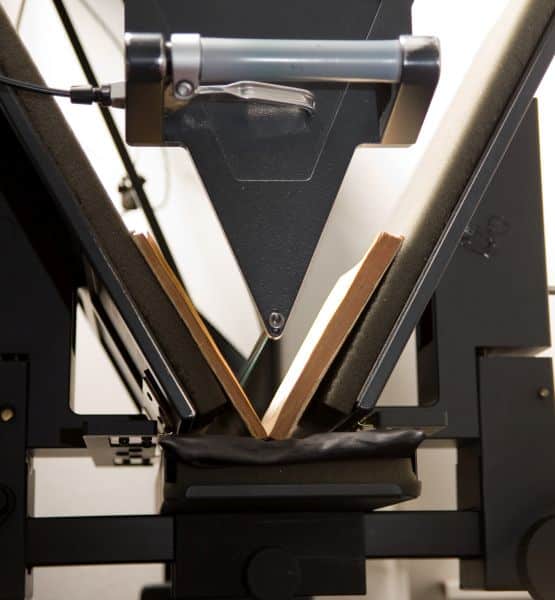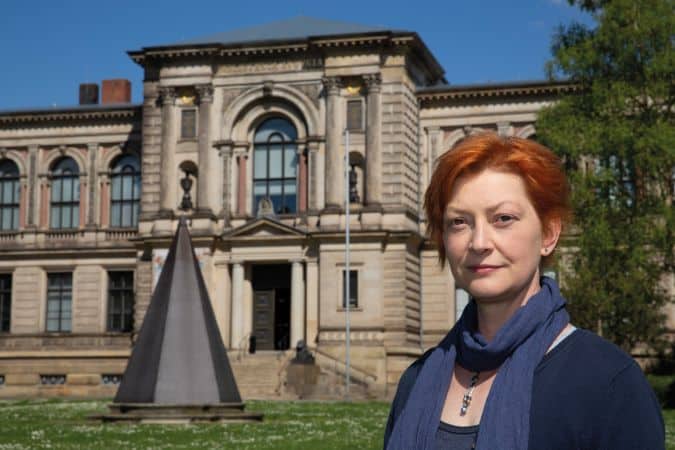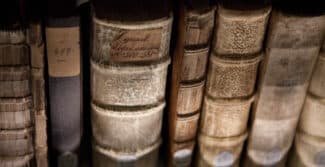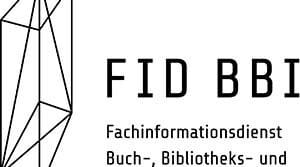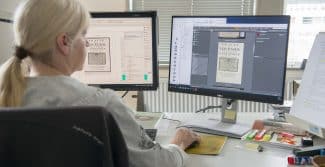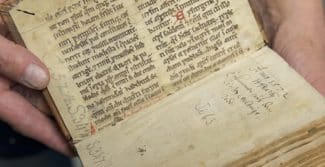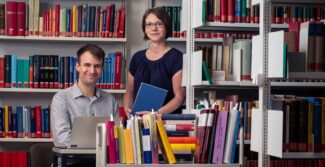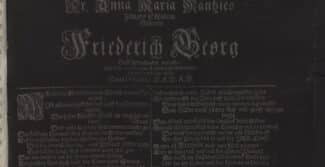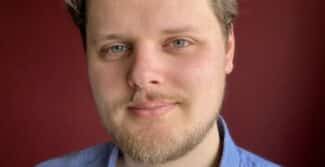25 August 2021
HAB: You are a professional photographer. What brought you to the HAB?
Michaela Weber: That was a lucky coincidence. I actually wanted to become a library assistant, but then I found out that there was also an apprenticeship on offer here as a photo lab technician. So I applied for it, but then sent off an application to train as a library assistant in any case. I didn’t think I had much chance of being accepted, but I was really keen to do it since I had always been fascinated by old books. Then, in 1985, I did indeed get a place to train as a photo lab technician. After I’d finished the apprenticeship, I was lucky enough to be offered a job. Then, at some point, I thought it would be better if I were able to take photos as well. So then I did an abbreviated training as a photographer and after several more years I qualified as a ‘master photographer’, passing my exam in 2001. I never regretted my decision to become a photographer at the HAB.
HAB: What do you find so fascinating about old books?
Michaela Weber: I admire the fine handwriting of that time, the subtleties that you find in the manuscript miniatures. You don’t see them until you enlarge the miniatures digitally. It’s amazing. Suddenly you see tiny faces in the clouds. I’ll always find that fascinating.
In more recent years I’ve developed a personal fascination with artist’s books. Initially, I wasn’t sure what to make of these modern books. But through the restorer Katharina Mähler, who often knows the artists personally and understands their intentions, whole new worlds have opened up to me. Together we discuss how to get the lighting right, how to convey the essence of these books. This is fascinating work, which I really enjoy.
HAB: Why do you work with cameras rather than scanners at the HAB?
Michaela Weber: It wasn’t an easy decision. It was my experience as a photographer that made me want to work with cameras. In the early years especially, scanners just weren’t good enough. Also, I had to be confident that I’d be able to look after the equipment properly. If there’s some hitch with our SLR camera, then I can look for the cause of the problem myself and usually I’m able to fix it. It also means that we are flexible and aren’t bound to a particular supplier.
HAB: What effect have technical advances had on your work in the photographic workshop?
Michaela Weber: We were lucky enough to be able to actively help shape the shift from analogue to digital and we’re proud of how we have developed the photographic workshop. When I started, we were working entirely with analogue technology. Films were exposed for different amounts of time, then developed, cut, sleeved and labelled – initially by hand, and later with an electric typewriter. You had to work in the dark with very little daylight. The order book was filled out by hand. Sometimes it would happen that a customer couldn’t remember the order number and we would spend a lot of time looking for it. When we got our first order database, it was great. We no longer had to work in the dark photo lab. Nowadays we have to coordinate with the IT people to make sure there is enough storage space. The way we deliver a finished job has changed too: at the beginning we would send photos, after that we used CD-ROMs, now we send a download link.
HAB: What steps does a digitisation job involve?
Michaela Weber: The information desk receives the digitisation orders. Then they check with the restoration workshop to see whether it’s possible to digitise a certain book. The restorers examine the book to see what is feasible. How far can I open it? What do I need to watch out for? We usually receive the result of their investigation in writing, sometimes with additional information. After we’ve taken the photographs, we put them on the server and also copy them onto a drive for the customer to download them, packaged as a ZIP file. Then we send an invoice and an e-mail to the customer.
We are very well networked at the HAB, and that’s a good thing, because we always get a lot of queries. Often the communication with the customers is really great. They thank us for the fantastic image, for the friendly communication or for doing the job so fast; that’s always very nice to hear.
HAB: When you photograph precious or rare books, are you sometimes afraid of damaging them?
Michaela Weber: No, I’m not but we are very careful. If we realise during the digitisation process that what we’re doing isn’t good for the book, then we consult with the restorers. That happens quite often. We hold a book in our hands and notice that it almost winces with pain when we open it. In that case we’re happy if we’re able to close it again. Every book is unique and needs to be treated as such.
HAB: What kinds of objects have you been able to digitise?
Michaela Weber: The vast majority are books. But of course the library also has other objects like busts, paintings, collections of prints and so on. And some very special things such as Luther’s spoon and Luther’s drinking glass. Those are the things that are really fun to work with.
HAB: What has been your most exciting project to date?
Michaela Weber: The most exciting thing was a 60-metre-long Torah scroll, which I photographed together with our restorer Heinrich Grau. It was a tremendous amount of work. It took two of us to unroll it and we were only able to photograph it in segments. We had to be incredibly careful because it’s very old and fragile.
HAB: What are the greatest challenges in your work?
Michaela Weber: Large formats are always a major challenge. Maps, for example, because you have to take a lot of shots and then piece them together to obtain a whole. Handling large formats is generally a difficult job. Some of the books are really heavy and it’s physically exhausting to work with them. Having to keep repeating the same movements is hard on your back. It’s lovely work but it’s pretty exhausting.
HAB: If you could choose a digitisation project, what would it be?
Michaela Weber: The Gospel Book of Henry the Lion and Matilda of England. We only have scans of the old Ektachromes from 1985, which look awful. We’ve digitised all of them, but if there isn’t anything there in the first place, you can’t conjure something up. You can’t simulate sharp focus, and you can’t improve colours that have gone green.
HAB: What are your future hopes for the HAB? What do you wish for?
Michaela Weber: I hope that we continue our tradition of excellent communication. The library is a very open institution. I like it when people perceive the library as an institution in our midst, where anyone can go to find out information and where you have access to helpful staff and, just as importantly, beautiful images.
The image above shows the Wolfenbütteler Buchspiegel. This book cradle was developed by the Herzog August Bibliothek in collaboration with the companies Fototechnik Kaiser and Image Engineering and allows sensitive books to be digitised even if they can only be opened to an angle of 45°.
